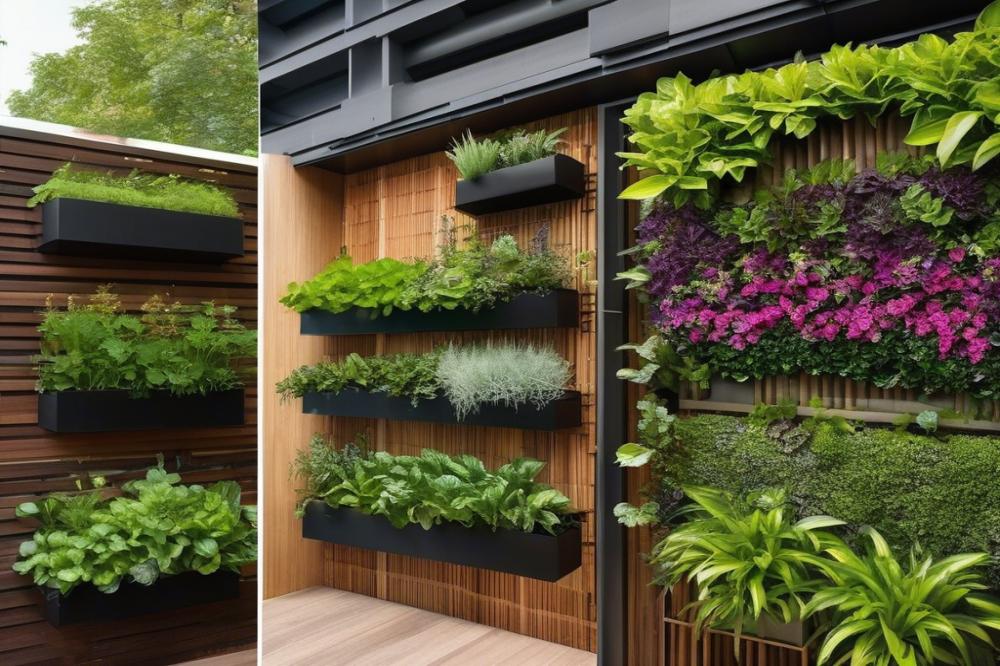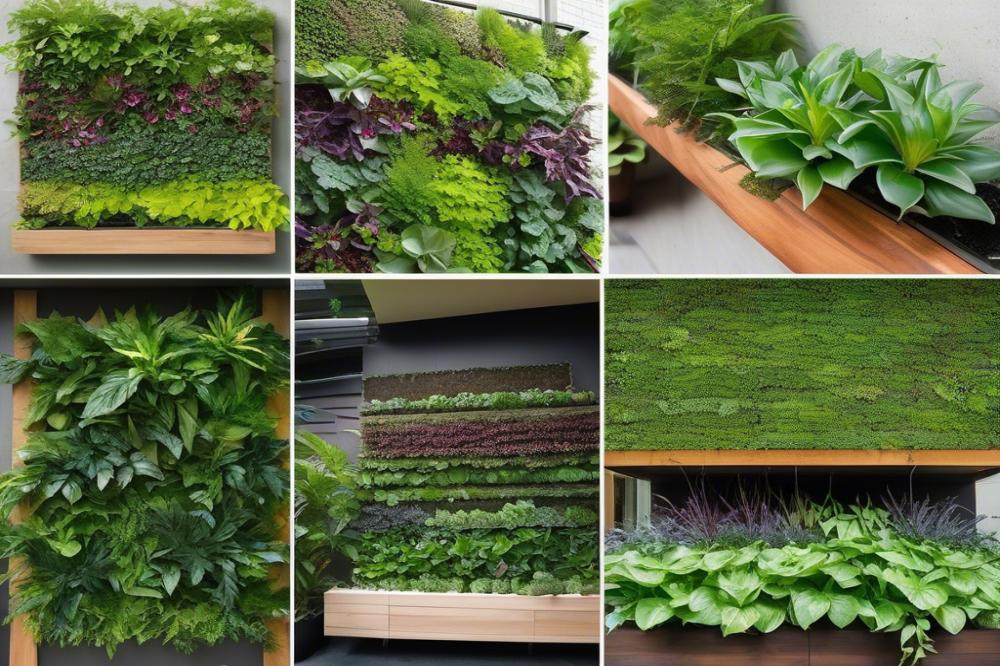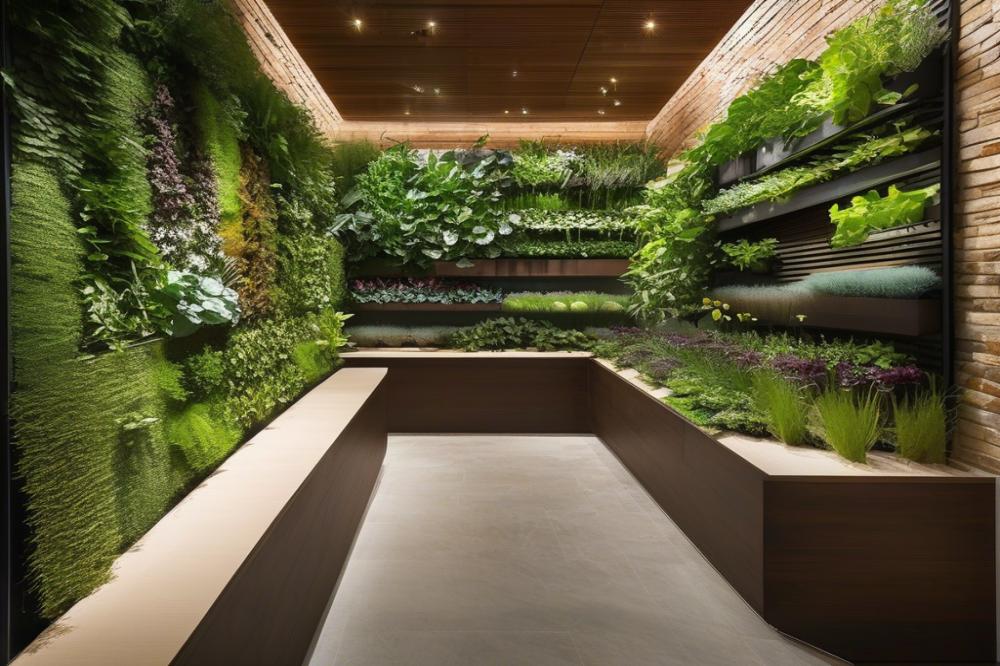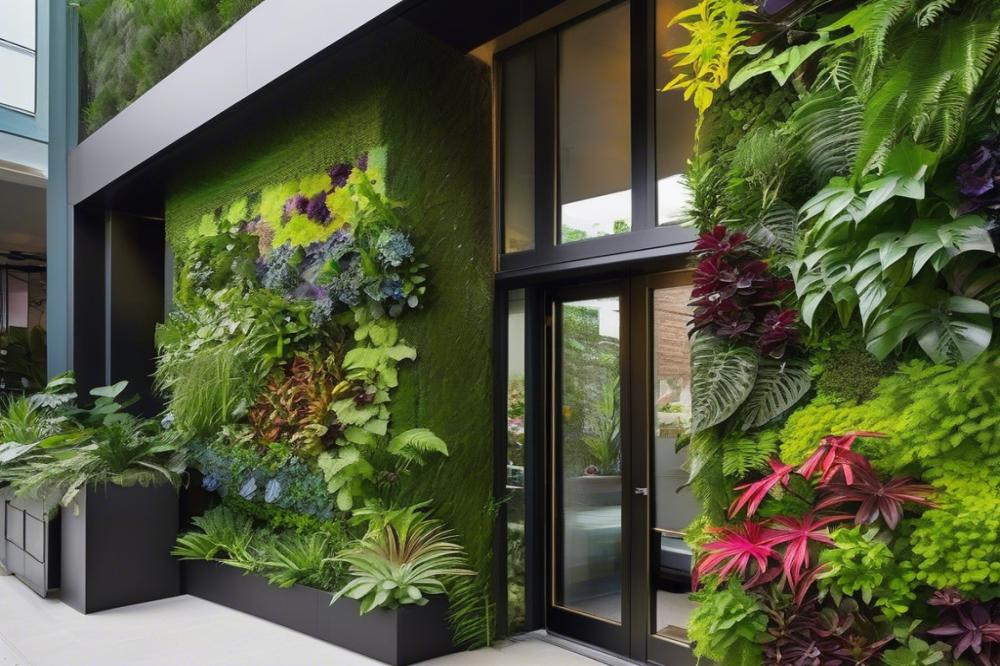Using recycled materials to Build a vertical garden
vertical gardens have soared in popularity in recent years. These attractive displays of greenery can transform even the smallest spaces into lush retreats. They offer a way to bring nature back into urban environments where room for traditional gardening might be scarce. So, what makes these vertical planters so appealing? Often, they can be constructed with eco-friendly materials, allowing urban gardening enthusiasts to create beautiful spaces with a minimal ecological footprint.
sustainable gardening plays a crucial role in promoting environmental health. By choosing to grow plants in a vertical arrangement, individuals can maximize their space while contributing to waste reduction. This method encourages the use of container gardening, making it simple for anyone to get started. Plus, Vertical gardens help improve air quality by filtering pollutants, which is particularly vital in cities.
Using recycled materials to craft these innovative gardens opens up a world of possibilities. Upcycling old pallets, plastic bottles, or tin cans can inspire a DIY spirit while keeping waste out of landfills. Not only are these projects fun and creative, they also support the principles of green building. Integrating waste into your gardening practice shows a commitment to sustainable living. Everyone can participate in this movement, making it easy to promote eco-friendly choices.
Incorporating recycled materials into your gardening projects allows for a unique blend of style and sustainability. With a little creativity and effort, someone can cultivate a vibrant garden that stands out in any environment. It’s time to roll up your sleeves, embrace the art of pallet gardening, and discover how rewarding it is to nurture your very own green oasis.
Types of Vertical gardens


Vertical gardens transform walls and fences into lush green spaces. They are a great way to incorporate nature into tight urban areas. These gardens come in many forms, each with its own charm and functionality.
Definition and Examples of Vertical Gardens
Essentially, a vertical garden contains plants arranged in a vertical format. They allow for a creative use of space while providing beauty and sustainability. Some popular examples include living walls that climb upward and hanging gardens that cascade down. Both serve the purpose of making greenery accessible, even where space is limited.
Overview of Various Vertical Garden Types
Different styles of vertical gardening fit unique needs. Hanging gardens traditionally consist of plants suspended from ceilings or balconies. They’re not just pretty; they’re perfect for small patios wanting a splash of color without taking up ground space.
Living walls, on the other hand, utilize vertical planters mounted on structures. These walls can be quite impressive, showcasing a mix of plants. Many homeowners appreciate how they help with air quality and temperature regulation in eco-friendly buildings. They also promote waste reduction through upcycling materials like old pallets and crates.
Container gardening offers another twist. Think of vertical planters filled with flowers or herbs set on shelves. This approach allows for easy access to fresh ingredients while optimizing small areas. It’s a practical choice for those who enjoy DIY projects or wish to engage in sustainable gardening. Mixing and matching plants can create stunning visual effects.
Hanging Gardens
Creating hanging gardens is straightforward. You can use pots, baskets, or even recycled materials like tin cans to hold your plants. Imagine vibrant flowers drooping playfully from your balcony. This type of gardening brings nature close and invites the outdoors in. Hanging gardens are especially great for apartment dwellers.
Living Walls
Living walls provide a modern touch to any space. Vertical planters can be stacked or arranged to suit your design vision. These green walls can host a variety of plants, from succulents to ferns. They not only serve aesthetic purposes but also serve functional ones, such as noise reduction and insulation in urban gardening scenarios.
Container Gardening
Container gardening offers versatility and ease. Anyone can create a garden without traditional soil beds. It’s about placing pots in a way that looks appealing while using limited space efficiently. Crafting your own containers from recycled materials encourages creativity, minimizes waste, and highlights the beauty of upcycling.
Techniques for Building Vertical Gardens


Introduction to DIY Vertical Gardens
Creating a vertical garden is an exciting way to grow plants in small spaces. Many people living in urban areas struggle with limited room for gardening. DIY projects allow you to use recycled materials, making it both eco-friendly and fun. You can transform your limited space into a green sanctuary while practicing sustainable gardening.
Basic Techniques Using Recycled Materials
Getting started with vertical planters does not need to be complicated. Finding items you no longer use can be the first step. This approach not only helps the environment through waste reduction but also encourages creativity. Anyone can embark on this journey with a little imagination and effort.
Pallet Gardening
Pallet gardening is one of the most popular methods for building a vertical garden. Old wooden pallets are easy to find and can create a charming display. Simply lean the pallet against a wall or fence and fill it with soil. Then, plant herbs or flowers into the gaps. This method not only supports container gardening but also enhances your outdoor space’s visual appeal.
Vertical Planters Using Plastic Bottles
Plastic bottles make excellent planters for vertical gardening. Cut them in half, add drainage holes, and hang them vertically. Utilize ropes or chains to create a stylish vertical display. This method is perfect for growing smaller plants, like succulents or herbs. Recycling bottles helps reduce waste and promotes eco-friendly practices in gardening.
Recycled Wood and Metal Structures
You can also use recycled wood and metal to create unique structures for your plants. Old fences, scrap wood, or even metal piping can be repurposed into creative holders for your greenery. Building elevated beds or trellises provides your plants with support while adding visual interest. This approach ties in beautifully with the idea of green building and upcycling materials around your home.
Upcycling and Waste Reduction in Vertical Gardening


Upcycling is a fantastic way to enhance sustainable gardening. It takes old items and turns them into something fresh and useful. In the world of urban gardening, this practice helps reduce waste and encourages creativity. By using discarded materials, anyone can contribute to eco-friendly efforts while enjoying DIY projects.
Understanding Upcycling’s Role in Gardening
What exactly does upcycling mean for a garden lover? In simple terms, it involves repurposing waste into functional objects. This approach goes beyond recycling; it adds value to what would otherwise be trash. Every item has potential. For instance, a worn-out wooden pallet can become a stunning vertical planter that brings your garden to life.
How to Select Materials for Upcycled Vertical Gardens
The selection process for materials is crucial. Look for items that are sturdy and safe to use. Things like old containers, bottles, and crates can transform into handsome planters. However, avoid anything that could leach harmful chemicals into the soil. Checking durability is also smart. Items meant for outdoor use, like certain woods or metals, hold up better than fragile ones.
Benefits of Waste Reduction and Eco-Friendly Practices
Lowering waste is a significant advantage of this gardening strategy. When you upcycle, you help decrease the amount of trash in landfills. It leads to a healthier planet. Furthermore, these eco-friendly practices promote resourcefulness. Creating vertical gardens from salvageable items can bring personal satisfaction. Plus, it’s a cost-effective solution for those on a budget.
Examples of Upcycling Projects for Vertical Gardens
Many examples illustrate how to upcycle effectively. One popular idea is pallet gardening, where old pallets are turned into staggered planters. This style not only saves space but also adds character to small areas. Another option is using hanging bottles for container gardening. Cut the bottles in half, fill them with soil, and hang them vertically. It’s simple and visually appealing.
Additionally, transforming wooden crates can yield attractive, multi-tiered planters. They fit neatly on balconies or patios. Using tin cans, once painted or decorated, can also create charming wall-mounted gardens. Each project speaks to creativity while promoting an eco-conscious lifestyle. The world of upcycling offers endless possibilities!
Incorporating Green Building Practices


Linking Vertical Gardens to Green Building
Building with recycled materials aligns perfectly with green building practices. Sustainable gardening methods emphasize reducing waste while promoting healthier environments. By using things like vertical planters, we can create green spaces even in limited areas. These spaces not only look good but also improve air quality. Eco-friendly approaches become more critical as urban areas grow.
Importance of Urban Gardening
Urban gardening plays a vital role in city life today. It provides fresh produce and encourages community involvement. People can engage with nature right in their neighborhoods. When everyone pitches in, we build stronger bonds and improve well-being. Container gardening makes it possible for anyone to participate, regardless of space.
Enhancing City Landscapes with Vertical Gardens
Using recycled materials, cities can transform boring walls into beautiful displays. Green infrastructure enhances landscapes and provides visual interest. Furthermore, these gardens help to mitigate urban heat and improve biodiversity. Workers in city areas often feel more relaxed in greener surroundings. A vibrant community is ultimately reflected in a blooming cityscape.
Case Studies of Successful Vertical Gardens
Several cities have successfully integrated green building techniques with urban gardening. One inspiring case is the use of pallet gardening in a busy downtown area. By upcycling old pallets, a striking vertical garden came to life. Local residents enjoyed participating in this DIY project. Another example shows how a neighborhood reduced waste by creating a garden from discarded materials. They used plastic bottles and wooden crates to develop a colorful, thriving green space. Projects like these showcase the possibilities when creativity meets sustainability.
Maintenance and Care for Recycled Material Vertical Gardens
Best Practices for Maintaining Vertical Gardens
Caring for your vertical garden made from recycled materials is simple, but it does require attention. Regularly check for pests. Keeping an eye out for any unwanted visitors helps protect your plants. Rotate the plants if possible to ensure all areas receive ample sunlight. Healthy plants lead to a vibrant display, so focus on their well-being.
Watering and Fertilizing Upcycled Materials
Watering can be tricky, especially with vertical planters. Ideally, use a drip system for consistent moisture. Lightly moist soil is crucial, so check regularly. Organic fertilizers work wonderfully with eco-friendly setups. Look for options that promote sustainable gardening, like compost or fish emulsion. This provides nutrients without harmful chemicals.
Common Challenges and Solutions
Pallet gardening often presents challenges like drainage or weight issues. Ensure that your setup allows for excess water to escape. Overwatering can lead to root rot, which is detrimental. Additionally, some materials used in upcycling may break down over time. Consider replacing any that show signs of decay with more durable options. Finding a good balance will prevent many issues.
Seasonal Care Tips
Different seasons require different care methods. In spring, focus on planting and establishing your garden. Summer brings heat, so be diligent in checking moisture levels. Fall is a great time for pruning and shaping your plants, while winter might mean protecting them from harsh weather. Bring container gardening elements inside if freezing temperatures threaten. Each season offers its set of tasks, so prepare accordingly for continuous growth.
Final Thoughts on Recycling for Urban Gardens
Vertical gardens offer numerous benefits worth noting. They maximize limited space, making them ideal for urban settings. Not only do they beautify the environment, but they also contribute to improved air quality. Such gardens promote biodiversity and provide a habitat for various species.
Some people hesitate to start gardening because of the perceived costs. However, using recycled materials cuts down expenses significantly. You can create stunning growing spaces without breaking the bank. Why not repurpose old pallets, bottles, or containers? This approach not only saves money but also reduces waste.
Transitioning to sustainable gardening practices is crucial for our planet’s future. Every little step counts. Making small changes fosters greater awareness of our environment and encourages others to do the same. By adopting eco-friendly methods, we promote healthier ecosystems and create a sense of community.
The impact of utilizing recycled goods in gardening cannot be underestimated. It signifies a shift towards mindful consumption. Every garden created in this way serves as a reminder that we can make a difference. Embracing these practices inspires others and proves how easy it is to contribute positively to our surroundings.
Overall, it’s an invitation to think creatively about gardening. Just remember, every tiny effort adds up. Start your journey with a few simple recycled materials today. In time, you’ll see how beautiful and thriving your environment can become.



